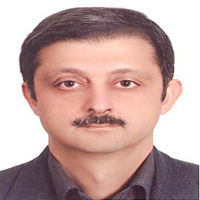Numerical Simulation and Visual Evaluation of the Mixing of Polymer Fluids in Twin Screw Extruder Based on Components Miscibility
Author(s):
Article Type:
Research/Original Article (دارای رتبه معتبر)
Abstract:
Hypothesis
The morphological attributes of polymer blends have a significant influence on the final properties of the blend. Many attempts have been made to simulate morphological changes of a blend in various equipments, using several mathematical models and numerical simulations. In this study, mixing of non-Newtonian fluids was simulated using a power-law rheological model in a typical twin screw extruder in three dimensions. Modified marker and cell (MAC) method was used for simulation. In modified MAC, for simulation of polymeric fluids flow, power law rheological model was used to generalize velocity equations to non-Newtonian fluids. Interfacial tension and viscosity ratios were used to introduce the effect of miscibility parameter.
Methods
In this method, momentum equations were solved and discredited using finite volume method. The linear algebraic equations were solved using three diagonal matrix and the coefficients of network’s points were obtained. Then, velocity values were obtained for any control volume in three dimensions by introducing typical rheological and interfacial tension parameters for a pair of polymers. The under relaxation factors (URFs) were used for velocities in three dimensions and pressure for faster convergence. Then, new spatial peculiarities of particles of two phases were traced by taking appropriate time intervals. The geometry of screws in twin screw extruder was achieved using hypothesis of imaginary domain of screws tips.
Findings
A twin screw extruder with glass barrel was designed and constructed for intuitive investigation of mixing development. Mixing of polymer pairs of different miscibility was performed in equal time intervals. The experimental pictures were compared with the simulation results. A very good agreement was observed between the results of numerical simulation and experimental images in both miscible and immiscible fluids. The determined separation areas for theoretical and experimental images also confirmed the accuracy of the simulation. Therefore, modified marker and cell (MAC) method could be used to simulate the mixing of polymer blends in twin screw extruder, as the most common blending equipment.Keywords:
Language:
Persian
Published:
Iranian Journal of Polymer Science and Technology, Volume:32 Issue: 1, 2019
Pages:
55 to 64
https://www.magiran.com/p1992408
سامانه نویسندگان
مقالات دیگری از این نویسنده (گان)
-
Mechanical Behavior of Filled Rubber Compounds: Hyper-Elastic Models Based on Strain Amplification
Mirhamidreza Ghoreishy *, Foroud Abbassi-Sourki
Iranian Journal of Polymer Science and Technology, -
Multiscale Modeling of Mechanical Properties of Green Tire Tread Compound
Mohammad Barghamadi, Mohammad Karrabi *, , Ghasem Naderi
Iranian Journal of Polymer Science and Technology,



